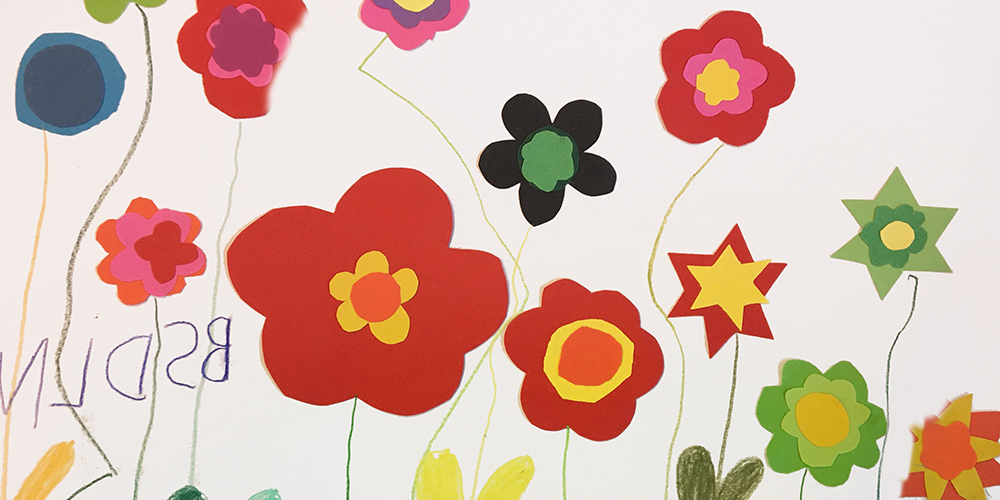Overcoming anxiety with broccoli monsters.
Text: Yvonne Vahlensieck
Up to a point, fear is a normal – and even beneficial – experience for children. But when fear takes the upper hand, it helps to make the causes of this anxiety tangible.
Creativity is key to Ina Blanc’s counseling sessions. Children craft colorful flowers, paint pictures of frightening monsters and build sculptures. The goal is to render their fears tangible and develop effective coping strategies. Ina Blanc, a psychologist who specializes in working with children and adolescents, offers counseling and therapy at the Centre for Developmental and Personality Psychology (ZEPP) of the University of Basel.
Not every anxious child, however, needs to be taken directly to therapy. “Fear is a normal emotion with a key role to play in our survival,” says Blanc. So, parents need not be alarmed. Research shows that typical fears accompany each stage of childhood development: Many preschool-aged children are afraid of the dark or being left alone. Once children reach school age, their fears shift to the social arena and their own performance: They worry, “Will they laugh at me in school?” or “Will I be as good as the other kids in gym class?”
As teenagers, they begin to experience fears about the future, too. “Every stage of development is accompanied by new, unfamiliar things, and it’s natural for that to be scary,” says Blanc. “But development also means overcoming those fears and moving on. Achieving that builds a child’s self-confidence.”
Yet sometimes children require professional help. Perhaps the fear has become extreme and persistent. Perhaps it is beginning to cause problems in the family, or the child is suffering inordinately as a result. In such cases, psychologists can step in to offer assistance to children (and their parents), regardless of whether the child’s fear is based on something real, like dogs, or imaginary foes, such as the monster under the bed.
Detectives on the trail of their own fear
Blanc begins her sessions by explaining how fear affects the body and how it can be exacerbated, sustained or overcome by thoughts and behavior. Children can then act as detectives, playfully investigating their dysfunctional thoughts and responses and identifying the physiological precursors of fear, such as a racing pulse or cold hands. “ Then they have time to intervene and calm themselves down. Once the fear has progressed past a certain point, we tend to feel paralyzed.”
The aim is to establish skills to empower the children to successfully manage the situations that arouse fear. In the long run, simply avoiding problematic situations amplifies that fear. If children shy away from speaking about their fears, Blanc allows them to draw those fears instead. She usually starts out with humorous, harmless illustrations of broccoli or spinach monsters. “The drawing turns the monster into something tangible and therefore malleable, something the children can change.”
Then Blanc works together with the child to brainstorm ways to prevent fear from taking over, for example, deep breathing, relaxing music, cuddling with a stuffed toy or imagining pleasant things. Simple fears that do not conceal deeper problems can be managed using these and more advanced methods in just a few sessions.
Genes and education
But what causes some children to develop these types of anxieties while others voyage fearlessly through life? Blanc explains that researchers have identified different risk factors. On the one hand, genetic predisposition may be responsible for establishing an innately low arousal threshold in the brain’s limbic system, which triggers fear responses. And on the other hand, parenting style can play a role as well. For example, overprotected children are more likely to develop anxiety disorders.
It is important for parents to encourage anxious children to take small steps and offer positive feedback when they succeed. Parents should remind children of how much they have already accomplished. “I would always advise families to communicate openly about their emotions.”
Parents should feel free to admit that they are scared sometimes, too – and then proceed to explain to their children how they overcome those fears. This teaches children that fear is not an insurmountable problem. After all, Blanc tell us, “There are no good and bad emotions, just good or bad ways to handle them.”
Short path from research to practice
The Center for Developmental and Personality Psychology (ZEPP) of the Faculty of Psychology at the University of Basel is a non-profit practice center. Among many other psychological services, the ZEPP offers counseling, assessment and psychotherapy for children, adolescents and families. In doing so, the latest research findings are always incorporated. In collaboration with the ZEPP, the first continuing education program in child and adolescent psychology in Switzerland was federally accredited at the University of Basel in January 2022.
More articles in the current issue of UNI NOVA.

